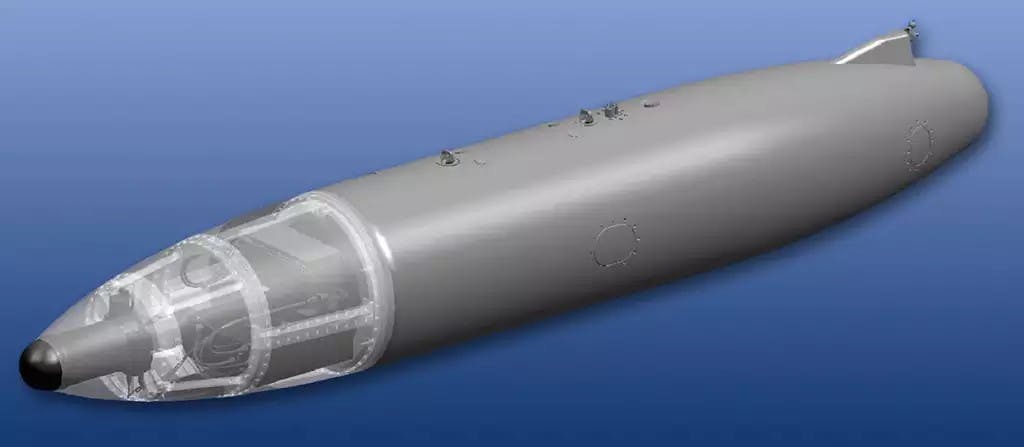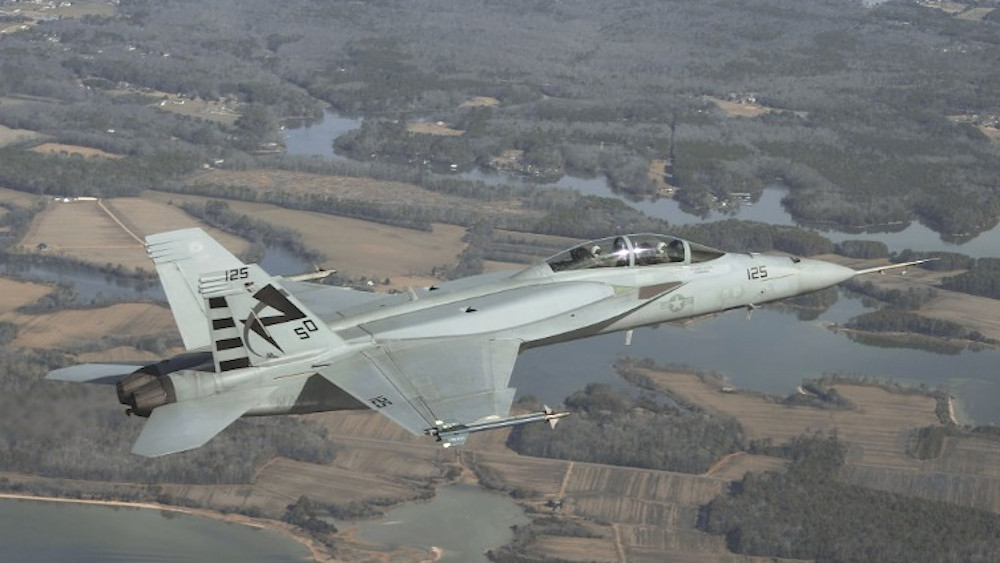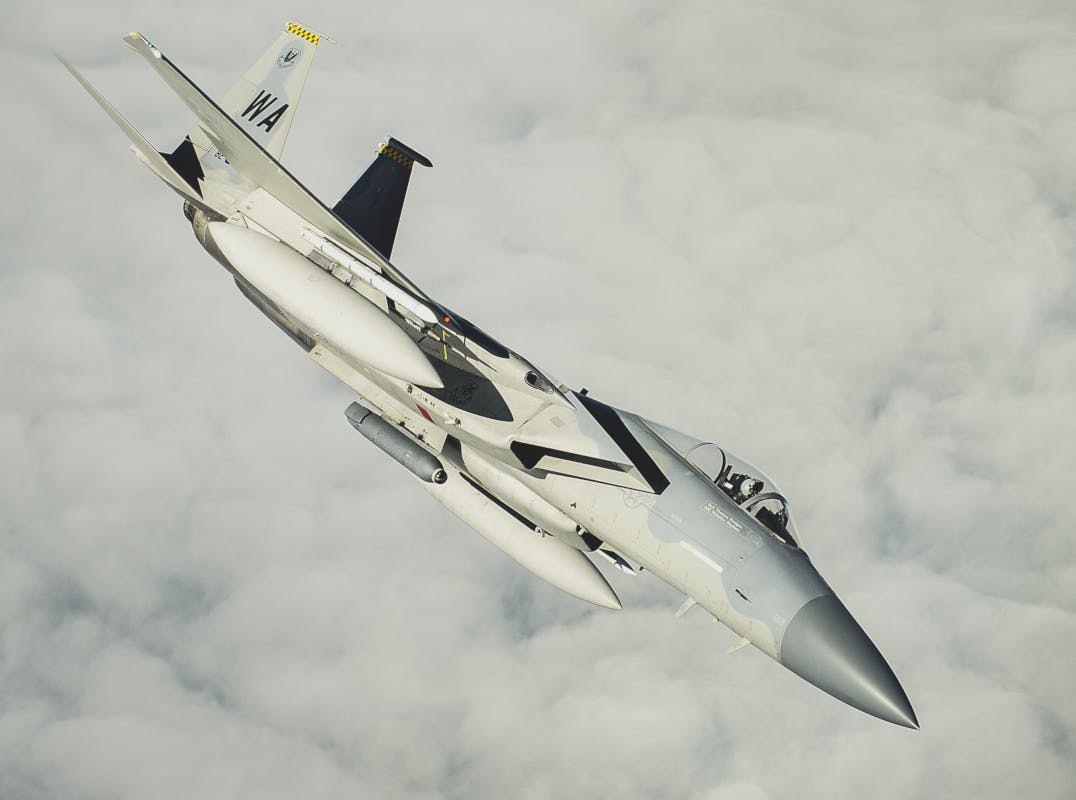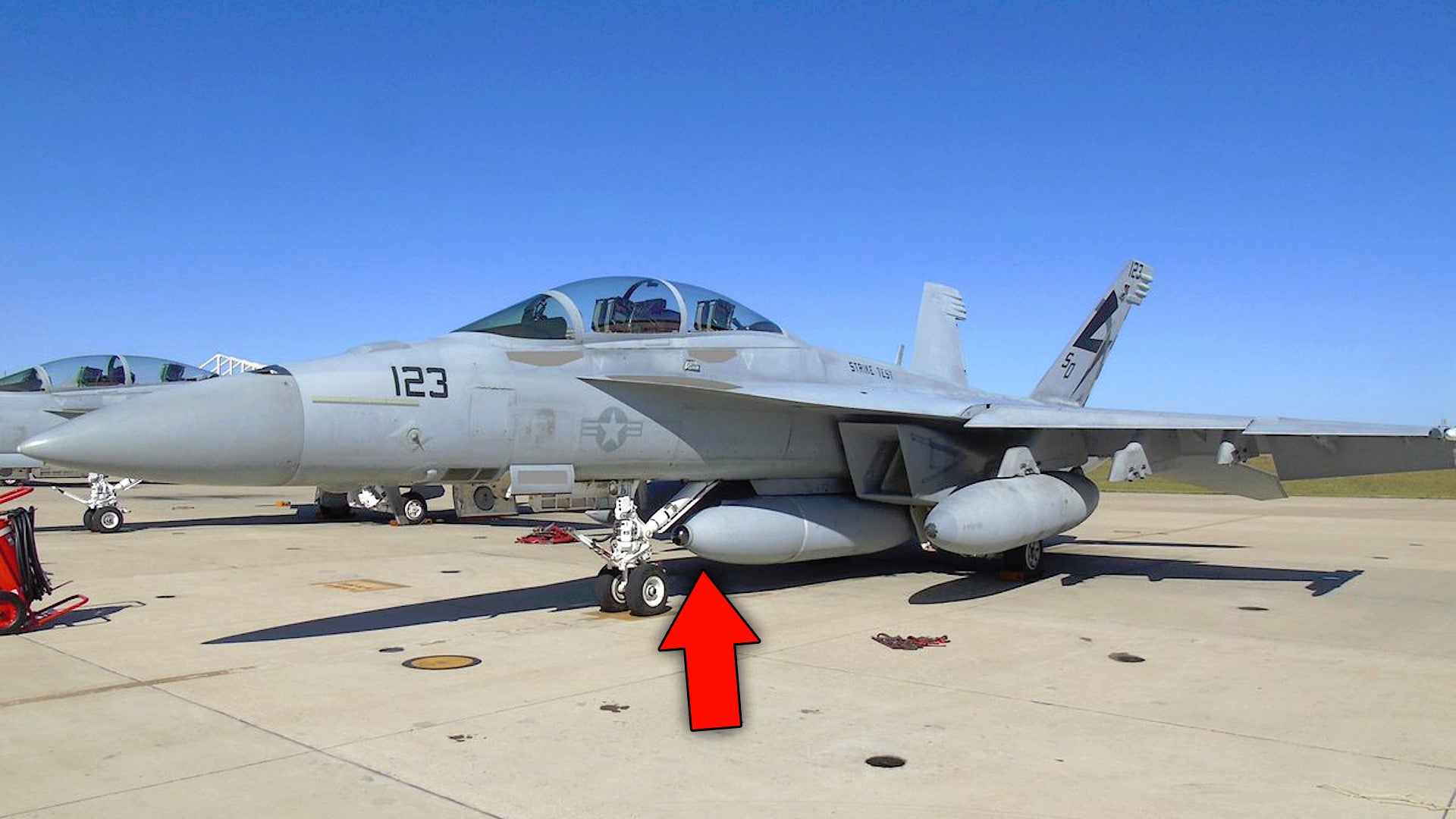Boeing has announced that one of two F/A-18F Super Hornet testbeds that it is using in the development of the Block III upgrades for the U.S. Navy flew with an infrared search and track system, or IRST, for the first time late last year. This successful flight test comes as the company moves closer to delivering the first of these initial jets, which have other Block III updates installed, such as conformal fuel tanks, in the near future.
On Jan. 15, 2020, the Chicago-headquartered plane maker revealed the IRST test had occurred, but did not say when specifically beyond “late 2019.” The Navy had originally planned for the IRST system to be included in the Block II Super Hornet upgrades, but ultimately deferred it to the Block III effort. On Jan. 7, Jane’s 360
had also reported that the Navy expected to receive the first of the F/A-18F testbeds before the end of the first quarter of the year.
“The IRST Block II sensor gives Navy fighters extended range and increasing survivability,” Kenen Nelson, the Director of Fixed Wing Programs at Lockheed Martin, which builds the IRST21 sensor that the Block III Super Hornets will use, said in a statement. “This technology will help the Navy maintain its advantage over potential adversaries for many years.”
The complete IRST system consists of a FPU-13 drop tank with the IRST21, also known as the AN/ASG-34, installed in the front portion, which the Block III Super Hornets will carry on their centerline station. The FPU-13 with the IRST sensor installed can carry 330 gallons of fuel as compared to a standard 480-gallon centerline tank. Conformal fuel tanks, another part of the Block III upgrade package, will help offset this lower amount of total fuel in the tank.

Boeing had previously proposed an internal IRST system mounted in the nose, which would have required the elimination of the Super Hornet’s 20mm M61A2 Vulcan cannon. The Navy subsequently decided to pursue the podded option instead and has been testing prototype versions, in cooperation with Boeing, since 2009.
Mounting the system on a centerline tank allows for far easier upgrades and future modification work and it offers a better field of view than an under-nose mounted alternative. Most importantly, it means the sensors to be swapped between airframes easily, which is a welcome capability for an advanced IRST as the targeting data it collects can be sent to other aircraft in a formation. In other words, each aircraft having its own IRST is a far more costly proposition, but it offers limited advantages in some air combat scenarios compared to having half the formation carrying it and sharing the information the pods collects to the other fighters.
When it comes to the Block III Super Hornets, the IRST systems will also be tied into the new networking functionality that these aircraft will also be receiving. So, while a single jet with the IRST sensor would only be able to get a bearing and azimuth to the target, Boeing has said that fused information between two aircraft will be able to provide both range and altitude, enough data to actually engage the threat reliably. The Super Hornets will also be able to do all of this while scanning passively with their radars shut off, making them less vulnerable to detection by their opponents. Alternatively, the IRST pod will be able to help cue the Super Hornet’s other sensors to look at one piece of sky at the same time. For instance, if a target was detected by IRST, the aircraft’s AN/APG-79 active electronically-scanned array (AESA) radar could then work to also target that contact and the aircraft’s targeting pod could be automatically slewed to try to find and identify it visually. You can read more about the enhanced capabilities that the entire Block III package will offer in these past War Zone features.
The IRST system, in particular, is an extremely important part of the Block III upgrades and will give the Super Hornets a valuable tool for detecting and tracking stealthy targets, which are increasingly a potential threat to U.S. fighter jets. China has already fielded its first stealth fighter, the J-20, and Russia is still pushing ahead in its plans to acquire substantial numbers of the Su-57 advanced combat jet, which has some stealthy features, and there is the potential for both countries to export these or other stealthy designs.

Beyond scanning for stealthy aircraft, IRST sensors also have the benefit of not being susceptible to electronic warfare attacks. This makes them valuable backups to traditional radars when facing even non-stealthy aircraft in environments where there is heavy jamming and electronic warfare activity.
The U.S. Air Force is also acquiring a podded version of the IRST21, using Lockheed Martin’s propriety Legion Pod, for its F-15C Eagles. Podded IRST sensors are very likely to migrate to other types of aircraft beyond just the Super Hornets and Eagles in the future, as well, and you can read more about the enhanced capabilities that these systems will offer U.S. fighter pilots in this past War Zone piece.

At present, the Navy still expects to reach initial operational capability with the Block III Super Hornet in 2021 and have one squadron of the upgraded jets per Carrier Air Wing by 2024. Boeing had told Jane’s 360 last week that the delivery of the first F/A-18F testbed aircraft was still “on schedule” and was slated to occur before the end of March 2020.
The two testbeds will feature some, but not all of the Block III updates. The picture Boeing released along with its announcement of the IRST flight test shows an F/A-18F with the tail number 123 carrying the podded system. A previous photo that the company provided to Jane’s 360, seen earlier in this story, shows the second aircraft, tail number 125, equipped with the conformal fuel tanks.
It’s not clear what other additions the two jets may have already, respectively, or are set to receive before they get delivered to the Navy. The service will use both of them to begin exploring new concepts of operation around the added capabilities, as well as to help develop a training curriculum to transition pilots from their existing Block II jets to the improved aircraft.
By all indications, we’ll be seeing more of the two F/A-18F testbeds this year, and hopefully learning more details about the impressive new capabilities the Block III upgrade program is set to offer, as the Navy moves steadily closer to getting the first of its fully updated Super Hornets later this year.
Contact the author: joe@thedrive.com
